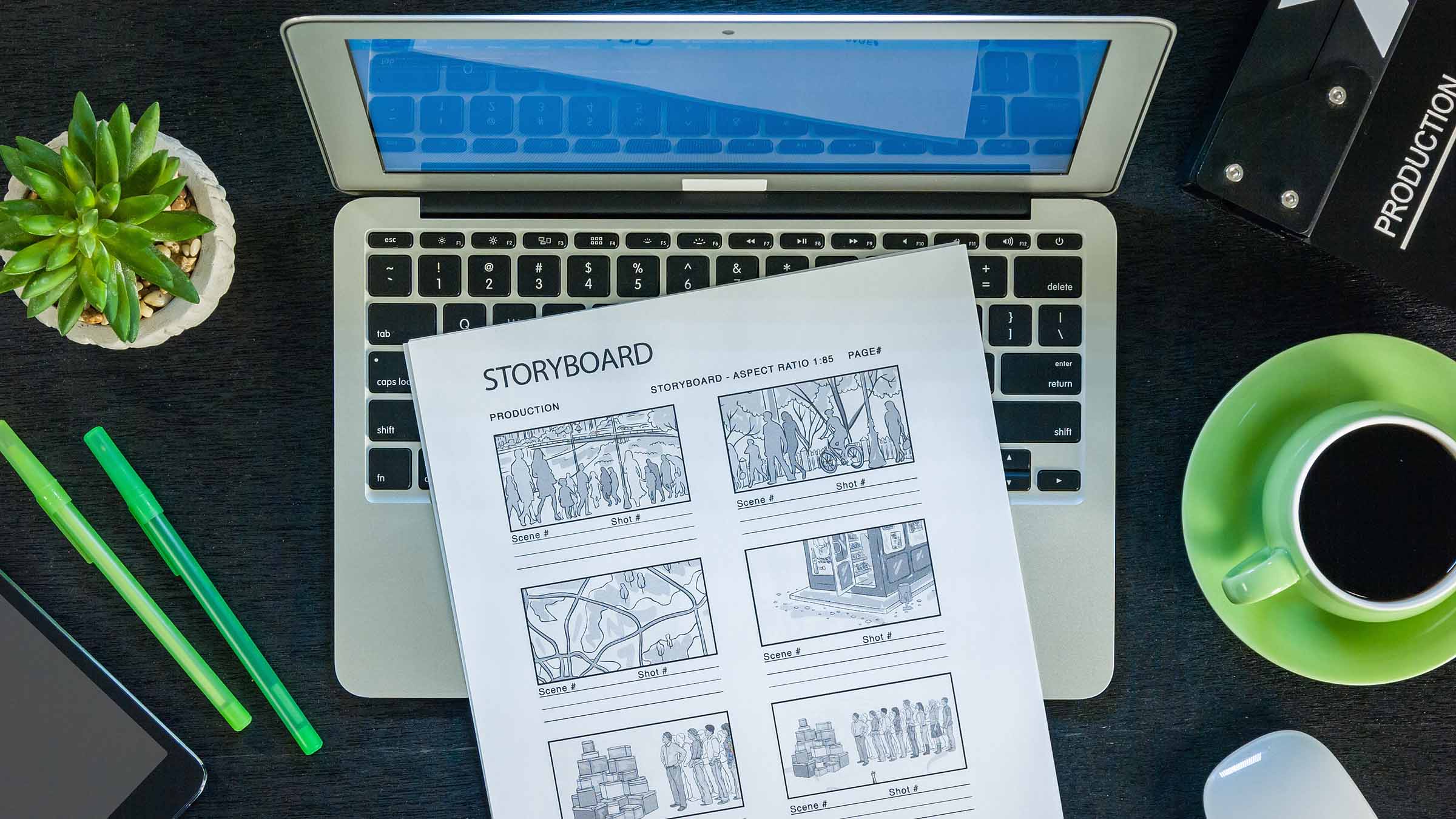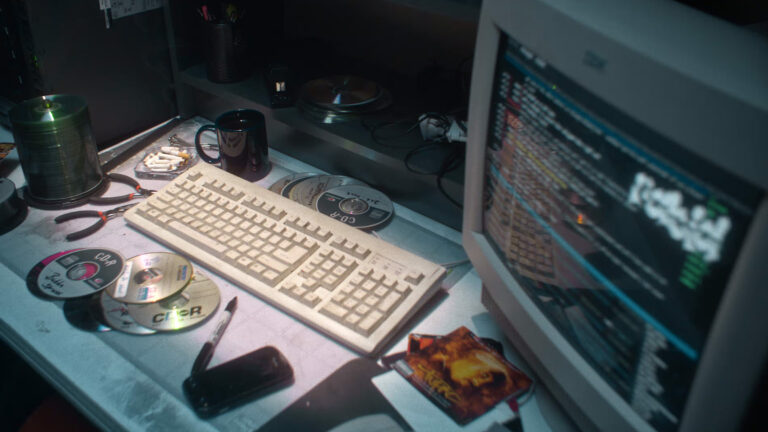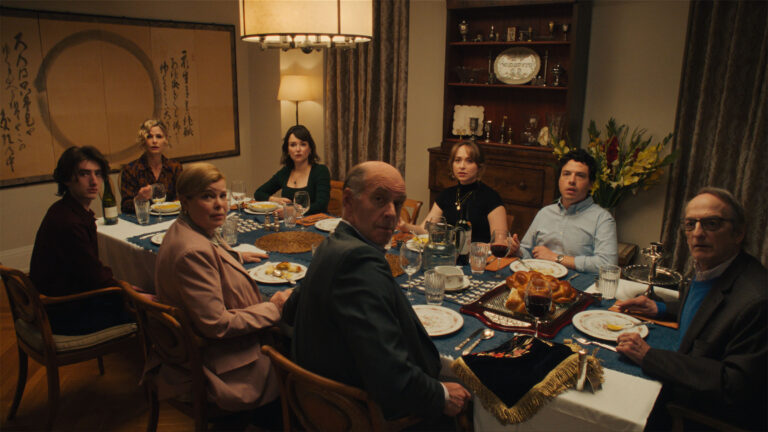In this series, we’ll be taking a look at how skills from outside the editing bay can make you a better editor. We’re kicking off with screenwriting, then we’ll move through direction and performance, before asking what we can learn from the audience.
So, how much can screenwriting inform our capabilities as film editors—especially when it comes to creating and shaping scenes, sequences, and story arcs?
Many of these techniques apply to film editing regardless of the form, style or genre. Every compelling and engaging story is undergirded by the same storytelling principles, whether the final project is a short corporate documentary or an indie feature film.
“Human beings are storytelling creatures. We convey truth with stories.”
—Neil Gaiman
Contents
The principles of story
Humans have been telling stories for as long as we’ve been around (and screenwriters have been writing books about storytelling for almost as long). So this article can’t possibly teach you everything there is to know. Instead, our goal is to highlight some starting principles and techniques that you can apply to your next edit, without getting too deep into the long grass.
(Although, if you’re after a good book on script writing and storytelling, then John Yorke’s Into The Woods is a good place to start.)
The basics: story and structure
The absolute foundation of any story is to have a clear beginning, middle and end. Whatever story you’re telling, if you can’t group your ideas, scenes or clips into those three stages, then you need to iron those out before you go much further.
That might sound incredibly obvious, but a lot of editors either start by dumping footage onto a timeline and whittling it down, or by throwing every interesting idea onto the timeline in a jumbled arrangement.

It takes a little practice (and a degree of discipline), but try to take the time to pause and review whether the structure of your edit is really working, before you move on to adding music, tightening your b-roll and designing snazzy titles.
A simple technique used in both scripted and unscripted editing, is to step out of the timeline all together and to ‘physicalise’ the beats of your story, on index cards, Post-it notes or photographic scene cards.
If these can be arranged into the correct order with the right connective tissue then your story should be in good shape.
Intention and obstacle
“We’re going to talk about Intention and Obstacle. Which is the most important thing in drama, without that you’re screwed blue. Without strong clear intention and a formidable obstacle you don’t have drama.”
—Aaron Sorkin, Screenwriting Masterclass
In his Masterclass on Screenwriting (which I’ve reviewed here), writer and director Aaron Sorkin shares why intention and obstacle are the building blocks of all drama. Think of it as unstoppable force meets immovable object.
For editors, it then becomes a question of whether the intention of the story, scene, character, or idea is clear and compelling? Is the nature of the obstacle that stands in the way suitably formidable and challenging? Do the two concepts align?
If intention or obstacle aren’t clearly defined and communicated, the audience can get lost—or worse, disengaged from the story—because they’re not sure where it’s going or what is at stake.
An everyday example of these two principles at play can be found in most dish soap commercials. Stuck-on food and grime (obstacle) meets superior cleaning performance (intention). But we only understand how spectacular the shine is based on seeing the juxtaposition of the before and after, or the clean sweep down the middle of the dirt.

Juxtaposition
“The forest, then, is an explosion of opposition, whether embodied as an inciting incident, or act turning point, or midpoint or crisis point or scene turning point, it is the primordial building block of all drama. And those blocks create the confrontation of something with its opposite.
When two opposites are juxtaposed correctly, an explosion occurs, and the story comes alive.”
– John Yorke, Into The Woods
In a similar fashion to the importance of juxtaposing the intention and obstacle, there are other forms of juxtaposition that every editor should be conscious of when it comes to improving their edit.
Consider the collision of elements such as shot length, screen time, whose face we are on for specific lines of dialogue, reactions, how tight or wide the framing is, etc. These all shape how the audience experiences a scene.
For example, if one character is largely seen listening, while another delivers dialogue off-camera, how does this shape the perspective of the scene? There are some beautiful examples in this scene from Good Will Hunting—the standoff at the beginning, the loaded moments where you can see understanding taking root, even the quick crosscuts where the characters laugh together, only to have them push apart again in the moments that follow.
So as an editor, always be looking for juxtaposition of the visual and the dialogue, and ask yourself “Does it create the most dramatic effect or match the scene’s intention?”
Scenes vs. sequences
Another storytelling principle that editors should be mindful of is the importance of not just constructing good scenes, but great sequences.
This level of story structure analysis can obviously only be considered once each scene has been constructed, shot by shot, and those scenes stitched together into the beginnings of a sequence.
But just as your story needs its defined beginning, middle, and end, you also need to take some time to step back and assess how the pacing and flow of the ideas within each scene work in relation to each other.
In his masterclass on directing, Ron Howard describes it in this way:
“Most directors would say your movie is built on a handful of highlight scenes… they’re usually a pay off to a sequence. Billy Wilder said you have to understand your five important scenes and know how to build to them.
During the course of a movie there is not just one climax at the end, there’s meant to be a lot of spikes, and it’s the directors job to identify it and make sure you don’t underplay those, and that also in the aftermath of one of those moments you give the audience a breath.
You understand that you’ve just completed one sequence with its own climax and give yourself a moment to collect yourself, and wonder what’s going to happen next and then move into it with the characters.”
–Ron Howard, Directing Masterclass
So many useful techniques spring from this mindset of building sequences and not just scenes. First, there’s the focus on discrete chapters within the story that work coherently as a section, where the pacing and transitions during and between each scene naturally flow from one to the other.
Then there’s focus on tightening the story. Removing extra ‘shoe leather’—people walking into rooms, or driving to another location, or sequences of establishing shots—and instead intercutting two scenes to increase the pace and reduce the runtime by juxtaposing the different locations and actions.
Map the structure
One interesting approach to visualizing these ‘spikes’ and sequences was taken by editor Eddie Hamilton to map out a minute by minute breakdown of each of the Mission:Impossible movies. Created by his editorial trainee, Hannah Leckey, during the post production of Mission:Impossible – Fallout, the line oscillates between action and talking.
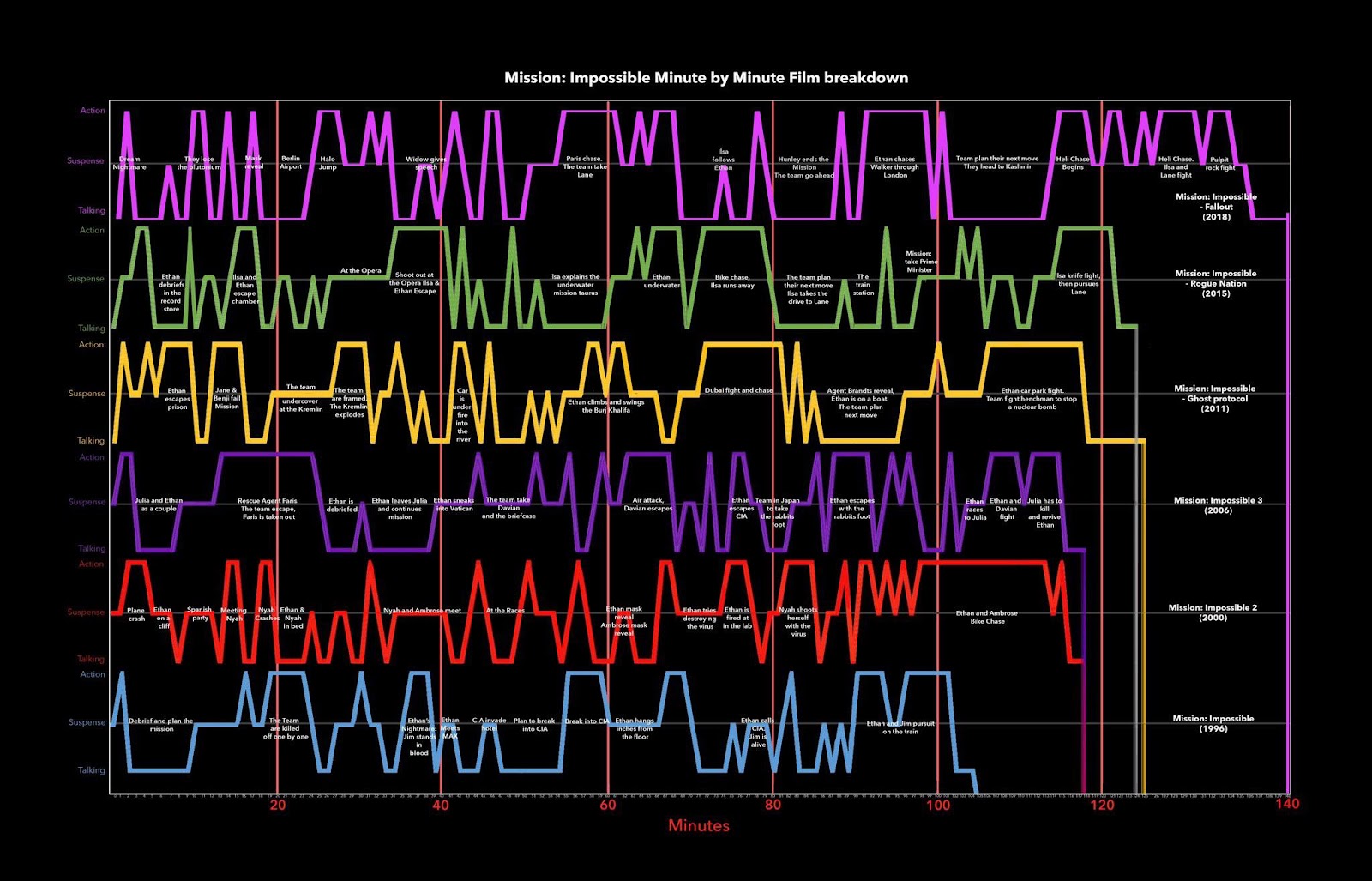
It’s fascinating to consider all of the different structures and pacing of both action sequences and ‘talking’ sequences, which often clarify the outcome of what has just happened and set up the next set of spikes. John Woo’s M:I 2 characteristically has a lot more spikes throughout, while M:I 3 has one major action sequence at the start followed by a longer series of talking scenes, in contrast to Fallout, which has a longer section of set up towards the back half of the film and into the final crescendo.
After working on a project for a long stretch of time, when you know every part of it so well, it can sometimes be hard to see the wood for the trees. Techniques like these can help to crystallize and clarify the current structure of the story and expose any parts of the edit where the forward momentum is currently lacking.
You might also want to check out Save the Cat, founded by the late screenwriter Blake Snyder, which often posts structure breakdowns of new feature films based on his 15 “beats.”
Editing as the final rewrite
Editing is often called the final rewrite or the third rewrite, with the original script and the production process being the first two—a concept usually attributed to filmmaker Robert Bresson.
It’s essential for editors to have this mindset; that they’re rewriting the project in the edit suite. Ideas that worked on paper may not survive the transition to screen. Something that took a whole page of dialogue to convey might be better served by a simple look between two characters.
Your job as an editor is to make the very best version of the project you can. You need to honor the intentions of those who have already provided their contribution to the story, and work in service of the director (or client) to best meet their goals. And to do so with a totally open mind.
That includes throwing stuff out.
Take stuff out
“The only thing that matters is the film from beginning to end. That’s what matters. The only thing that’s sacred is the film in its entirety. Does it work?”
— Elliot Graham, Steve Jobs
Steve Jobs editor Elliot Graham describes the essential nature of not holding any part of the project as being too good or too important to keep. If the whole project works better without it, it has to go.
A good example of this is demonstrated in this episode of Lessons from the Screenplay on controlling the flow of information in Ex-Machina, with direct comparisons to the script and the final edit.
In one of the film’s opening scenes two entire pages of conversation are reduced to just the final two lines of dialogue.
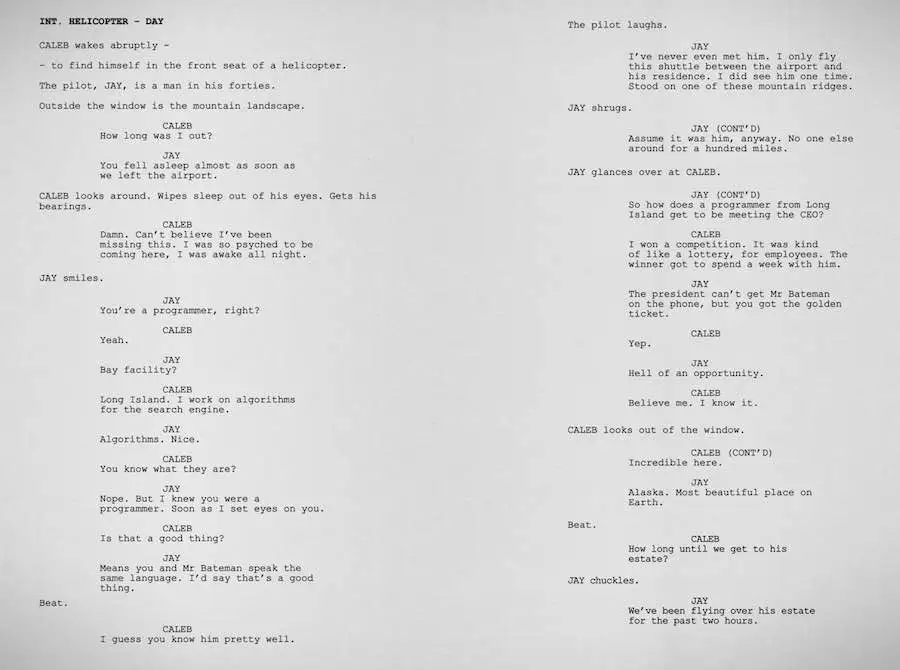
Not only does this shorten the scene and increase the pace, it also removes a lot of exposition about who the characters are and why they are meeting. This might seem like information that’s crucial to setting up the story, but when it’s temporarily withheld from the audience, we have to do a bit more work to join the dots ourselves. It builds curiosity and that’s a powerful hook.
Creating something out of nothing
Another good example of solving narrative problems by removing and reworking entire sections of the film comes from Joe Walker’s edit suite while cutting Arrival. He describes it as his favorite moment in the cutting room, thanks in part due to the serendipitous nature of editorial experimentation.
They needed to remove a “mid-story lull” comprising several scenes where which Amy Adam’s character is temporarily benched from the mission. But they also needed to keep an essential piece of information in play, namely that “exposure to a language can rewire your brain.” Unfortunately, the scene containing that key plot point also concluded with her being suspended from the mission. Exactly what they wanted to avoid.
“We scratched our heads about this for a while, then one day Denis said, ‘Let’s pick out the bits we want to keep from the scene, but without going as far as Weber benching Louise.’ We bashed three shots together, without the slightest care for smoothness—the first shot was the beginning of the conversation on Ian, a beautifully dingy shot, then there was a really ugly jump cut to a similar shot of Ian with his head in a completely different position. Boom. Then Louise’s close-up, where she’s fielding Ian’s questions while displaying a lot of anxiety. Weber offscreen and looming above her, we hold it long enough to really start to wonder when we’re going to see which authority figure she’s talking to.
The day we worked on this happened to be the same day we received our first animation walk test of a heptapod moving through mist. So Denis had the bright spark of not cutting to Weber at all, but incongruously to this fabulous creature hovering at the back of her bedroom, pushing against the venetian blinds.
We added some sound design, a threatening tone and the sound of the canary anxiously chirping and—boom—it’s a dream sequence. We managed to keep the vital ingredients without dragging the narrative down a rabbit hole and we got to inhabit Louise’s mind, always a good place to be with your central character.”
—Joe Walker, editor of Arrival.
I’m not saying that dream sequences can get you out of every difficult scrape, but it’s a great example of how an editor with the freedom to rewrite the story can make it more compelling and complete.
The unique editing process of animation
As an editor, you won’t always have to wait until post to make your mark. Take animation, for example, which turns to the iterative process of writing, creating, and editing on its head. (And virtual production, to a lesser degree.) Here, the editor is brought onto the project almost from the very beginning and will often see it through to the final deliverable three to five years later.
In animation, the story is worked and reworked many times—with the editor as a key member of the creative group—before work starts on the final animation. So there’s plenty of opportunity for you to work alongside the writer and director to help craft the story.
It’s a fascinating process, explored in detail in a new book called Making The Cut at Pixar, The Art of Editing Animation. But the video essay above will give you a solid overview.
Things editors should do with scripts
So other than embarking on a detailed study of the script writing process what should editors do with scripts? Here are a few suggestions.
Firstly, read them. One of the jobs any editor should be familiar with is reading and assessing scripts. Not only will it help you decide if it’s a project worth working on, but also to look for weak scenes, unnecessary dialogue, or just elements that you think might not make the cut.
Better to offer that feedback sooner. It might save the production some money!
Secondly, read them with the final edit in front of you, too. Screenwriter Aaron Sorkin recommends watching your favorite film with the script open on your lap and comparing that to what’s on the screen. This will teach you a lot about what can and does get cut, as well as how often scenes are intercut, moved around in the running order, or entirely re-shot.
Practice with a paper edit
Finally, a technique that’s similar to comparing script to screen is to run your own paper edit of the script. Print out a scene or two and really go to work on it. (If you’d like to practice on some classics, you’ll find plenty of options on the Internet Movie Script Database.)
Consider the scene’s central conflict, the intention and obstacle, which characters you want to focus on, and how you’ll communicate this in the edit. Ask yourself which lines of dialogue you’d want to be on the speaker for, and which ones you’ll give to the listener. Where might you use close-ups for emphasis? What parts can be rearranged, intercut with another scene or cut out entirely, and why?
And if you have a digital copy of the original movie, you could even push this exercise further by re-editing the actual scenes from the finished film. Doing so will teach you a tremendous amount!
Fin.
I hope this brief journey into the writer’s perspective has given you a fresh appreciation for how connected the art and craft of storytelling is, when approached from radically different roles within film and video production, and how much there is to learn from study another domain. Keep an eye open for the next article in this series—Editor vs. Director.

